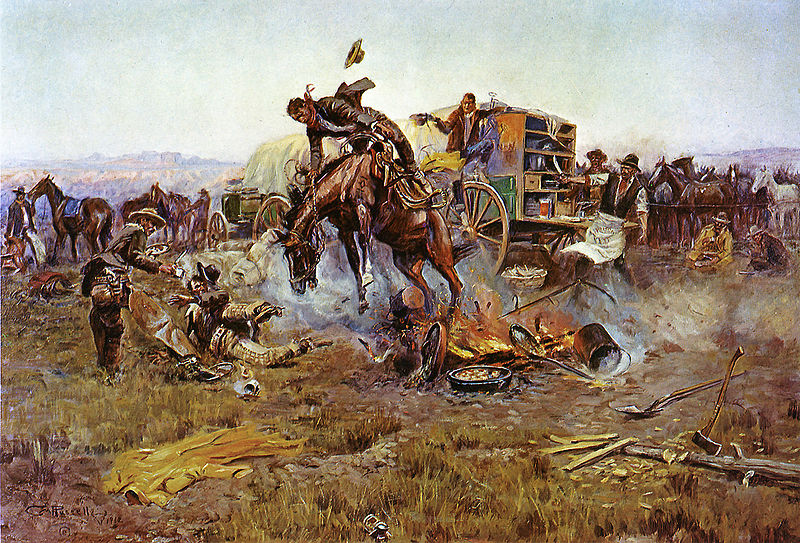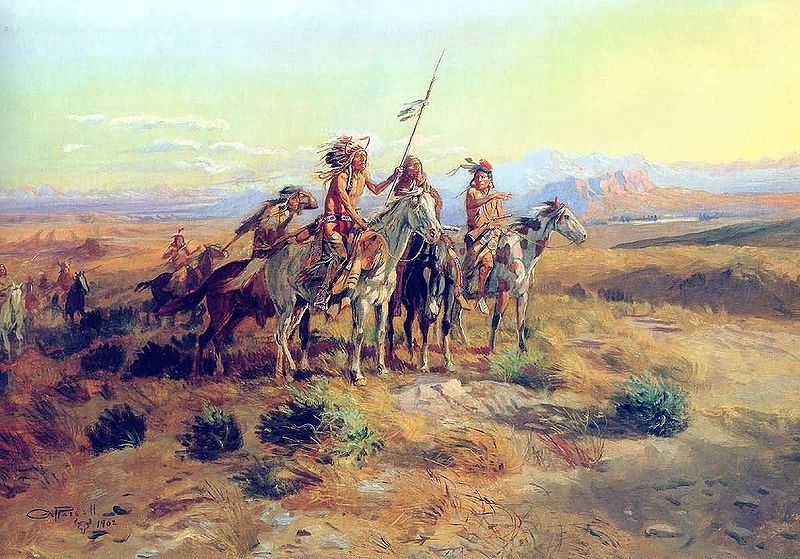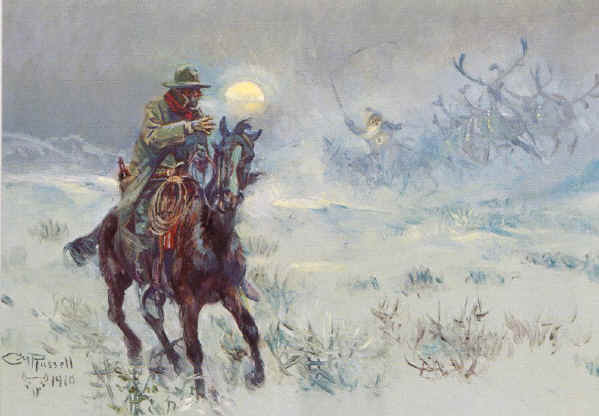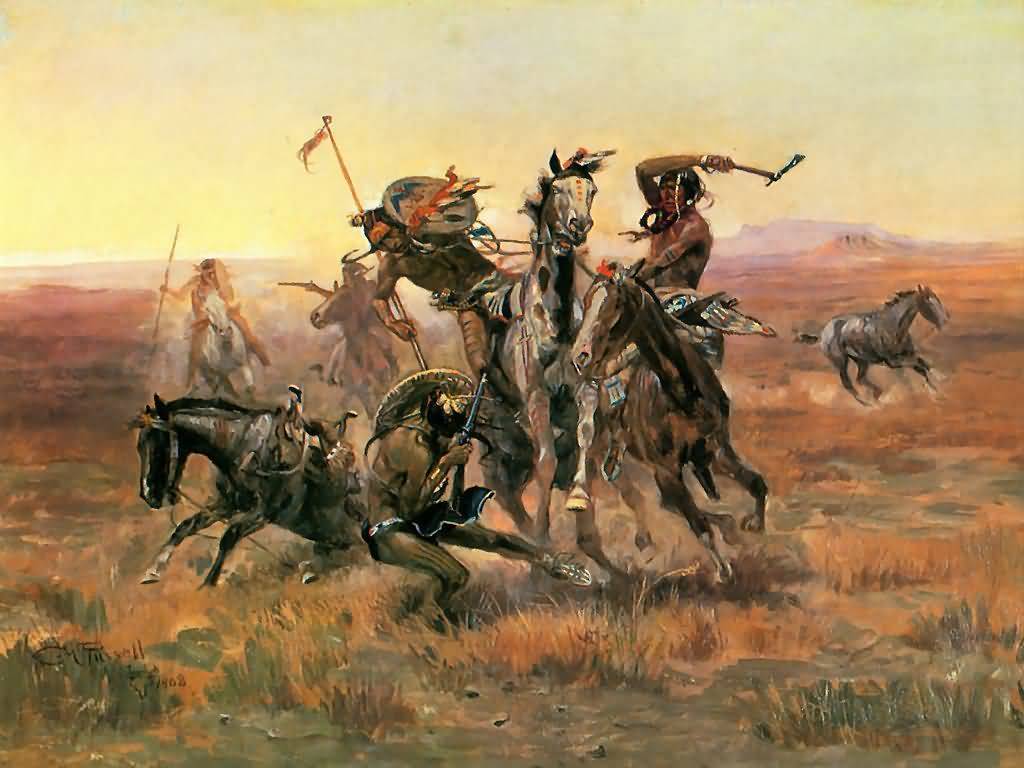<Back to Index>
- Physicist Jean Frédéric Joliot-Curie, 1900
- Painter Charles Marion Russell, 1864
- Peru's Revolutionary Túpac Amaru II, 1742
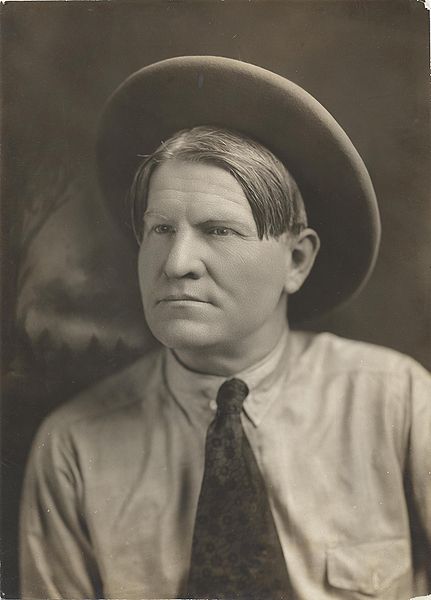
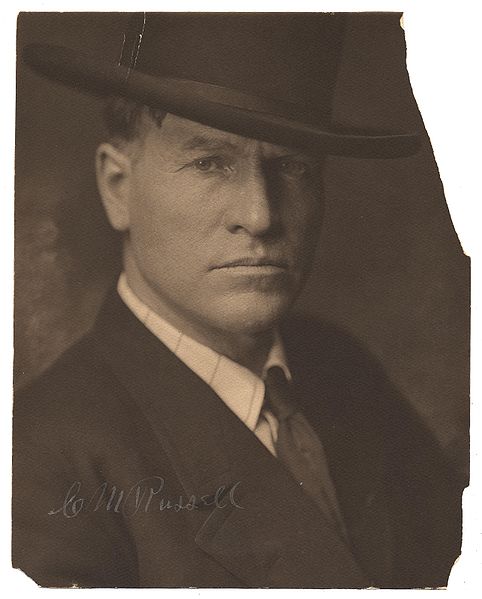
Charles Marion Russell (March 19, 1864, St. Louis, Missouri—October 24, 1926, Great Falls, Montana) was an artist of the American West. Russell created more than 2,000 paintings of cowboys, Indians, and landscapes set in the Western United States, in addition to bronze sculptures. Known as 'the cowboy artist', Russell was also a storyteller and author. The C. M. Russell Museum Complex located in Great Falls, Montana houses more than 2,000 Russell artworks, personal objects, and artifacts. Russell's mural entitled Lewis and Clark Meeting the Flathead Indians hangs in the state capitol building in Helena, Montana. Russell's 1918 painting Piegans sold for $5.6 million dollars at a 2005 auction.
Art was always a part of Russell's life. Growing up in Missouri, he drew sketches and made clay figures of animals. Russell had an intense interest in the wild west and would spend hours reading about it. Russell would watch explorers and fur traders who frequently came through Missouri. Russell learned to ride horses at Hazel Dell Farm near Jerseyville, Illinois on a famous Civil War horse called "Great Britain". Russell's instructor was Col. William H. Fulkerson who had married into the Russell family. At the age of sixteen, Russell left school and went to Montana to work on a sheep ranch.
In 1882, by the age of eighteen, Russell was working as a cattle hand. The harsh winter of 1886 and 1887 provided the inspiration for a painting that would give Russell his first taste of publicity. According to stories, Russell was working on the O-H Ranch in the Judith Basin of Central Montana when the ranch foreman received a letter from the owner, asking how the cattle herd had weathered the winter. Instead of a letter, the ranch foreman sent a postcard-sized watercolor Russell had painted of gaunt steer being watched by wolves under a gray winter sky. The ranch owner showed the postcard to friends and business acquaintances and eventually displayed it in a shop window in Helena, Montana. After this, work began to come steadily to the artist. Russell's caption on the sketch, "Waiting for a Chinook", became the title of the drawing, and Russell later created a more detailed version which is one of his best-known works.
In 1896, Russell married his wife Nancy. In 1897, they moved from the small community of Cascade, Montana to the bustling county seat of Great Falls,
where Russell spent the majority of his life from that point on. There,
Russell continued with his art, becoming a local celebrity and gaining
the acclaim of critics worldwide. As Russell kept primarily to himself,
Nancy is generally given credit in making Russell an internationally
known artist. She set up many shows for Russell throughout the United
States and in London creating many followers of Russell. Russell
the artist arrived on the cultural scene at a time when the "wild west"
was being chronicled and sold back to the public in many forms, ranging
from the dime novel to the wild west show and soon evolving into motion
picture shorts and features of the silent era, the westerns that
have become a movie staple. Russell was fond of these popular art
forms, and made many friends among the well-off collectors of his
works, including actors and film makers such as William S. Hart, Harry Carey, Will Rogers and Douglas Fairbanks. Russell also kept up with other artists of his ilk, including painter Edward "Ed" Borein and Will Crawford the illustrator. On
the day of Russell's funeral in 1926, all the children in Great Falls
were released from school to watch the funeral procession. Russell's
coffin was displayed in a glass sided coach, pulled by four black
horses. A collection of short stories called Trails Plowed Under was
published a year after his death. Also, in 1929, Russell's wife, Nancy,
published a collection of his letters which was titled Good Medicine.
